MXA RACE TEST: THE REAL TEST OF THE 2019 KTM 350SXF
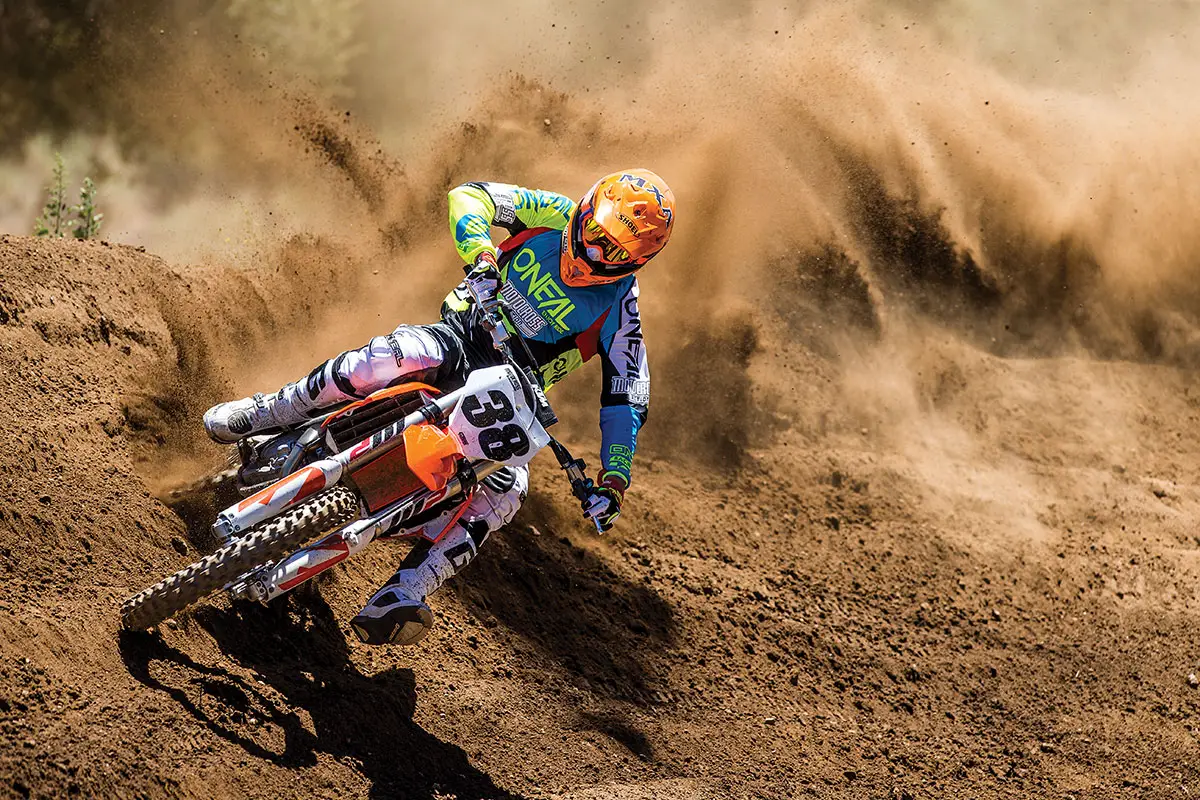
Q: FIRST AND FOREMOST, IS THE 2019 KTM 350SXF BETTER THAN THE 2018 350SXF?
A: You bet. At first glance, the 2019 KTM 350SXF doesn’t look all that different from the 2018 model. But, it is—decidedly so. Not only is it mechanically changed, but on the track, it is so different that every MXA test rider remarked on how improved the whole package was. And that includes things that we thought were spot-on in 2018. Rather than list the changes that KTM’s engineers made to the 2019 350SXF, which mimic in large part the modifications that came on the 2018-1/2 450SXF Factory Edition, we would prefer to discuss the changes in terms of how they work in action.
Q: IS THE 2019 KTM 350SXF CHASSIS BETTER THAN THE 2018 CHASSIS?
A: For all practical purposes, the 2019 frame is light years better than the 2018 frame. It handles better, absorbs bumps progressively, steers with ease and tracks the ground like it’s laser guided. However, it isn’t better for every skilll level of 350SXF racer. But, overall we can see what KTM was aiming for with it’s frame mods. We have to give a lot of credit to KTM’s genes. Over the last 10 years, KTM’s chromoly steel frame has been steadily improving with each generation. It has come a long way. The biggest change to the structure of the 2019 frame is that it is 10 percent stiffer torsionally and only slightly stiffer longitudinally. The increase in torsional stiffness, which comes from redesigned head tube gusseting and a much larger diameter cross brace, reduces twisting from the front end during high-load cornering, which pays dividends in overall accuracy (bigger dividends for faster riders and smaller dividends to slower riders. Last year’s KTM 350SXF frame was a no-nonsense handler. It required minimal input to get it to bend elliptical arcs. Surprise! The 2019 frame is literally planted to the ground as its tires had suction cups. If you want to put your front wheel a hair less than 3 inches to the right, you can literally dial in 2-7/8 inches at the handlebars. It will be spot-on.

Helping the frame do its job are 12mm-lower radiators, a narrow/lower fuel tank, aluminum head stays, sleeker bodywork, a stiffer top triple clamp and a 5mm-longer swingarm. Additionally, the aluminum tube subframe is 40mm longer. This helps reinforce the rear fender and support the seat across a wider range. In conjunction with the subframe, the 2019 seat has rounded corners and more padding in the tail section. It doesn’t hurt that the 221-pound KTM 350SXF is lighter than half of the 250 four-strokes on the showroom floors.
Q: HOW WELL DOES THE 2019 350SXF ENGINE WORK?

A: To tell the truth, the MXA wrecking crew wasn’t expecting any big surprises from the KTM 350SXF engine—but we were surprised by one change that affected the engine. Yes, it did get a new clutch, transmission, larger throttle body, redesigned exhaust system, 200-gram-lighter cylinder head and new ECU mapping, but the engine’s architecture was relatively unchanged, and the 2018 engine was already performing at a high level. We expected to be mildly amused by the mods but not blown away. Here is a quick rundown of what we found.
At first glance, we were disappointed in our 2019 dyno runs. At 53.30 horsepower, the bike gave up about 2/10th of a horse on peak power and produced less power and torque from 5000 rpm to 8000 rpm than last year. This would have been very disheartening if we had dyno’ed the 2019 KTM 350SXF before we had ridden it, but in order to give the 2019 engine a fair break—we had put two hours of riding time on it first. And from that time in the saddle, we knew that the dyno charts, while accurate from a numbers point of view, didn’t tell the whole story.
On the track, the 2019 KTM 350SXF felt stronger at roll-on and impressive in the midrange (which starts at 8000 rpm on this 13,400 rpm powerband). It ran strong and clean all the way to the top. MXA test riders use dyno charts to confirm what our seat-of-the-pants experience tells us—and our educated derrières said that we needed to dig deeper to find out why the 2019 KTM dyno chart was misleading. Here are the reasons why the 350SXF ran different for different people.
(1) IG-ACC. The 2019 KTM 350SXF has a livelier feel at the moment the throttle is turned than it ever had before. It literally barked, even at the lowest rpm. This instant throttle response does not show on a dyno, but you can feel it in the saddle and not help but be impressed. We think that something KTM calls IG-ACC is responsible. What is IG-ACC? It is an electronic map feature that advances the ignition timing above and beyond where it would ever be in normal riding. IG-ACC is only activated the instant that the throttle position sensor recognizes initial movement and returns to the normal advance very quickly, which means that every time you turn the throttle from closed to open, the ignition is radically advanced. This results in a quicker response the instant you twist your wrist, but that super response lays down a little between tip-in and 8000 rpm, and that was surprising. We liked the engine’s power, but wanted it to go quicker in the low-to-mid transition.
(2) Split injection. We’ve seen this before. Back in 2014, Honda introduced and quietly dropped its Dual-Timing injection system. Honda’s Dual-Timing and KTM’s Split-Injection systems use one injector to spray twice. The first charge is a short-duration spray that is used to cool the back of the intake valves’ heads. It is followed instantaneously by a second and longer charge that provides the majority of operating fuel. The key element of KTM’s Split-Injection is that the first spritz of fuel increases the density of the air/fuel mixture before the second and more effective spritz. Don’t think of Split-Injection as two separate bursts of fuel but as one long spray of fuel with a pause in it at the very beginning. This results in more usable power across the midrange.
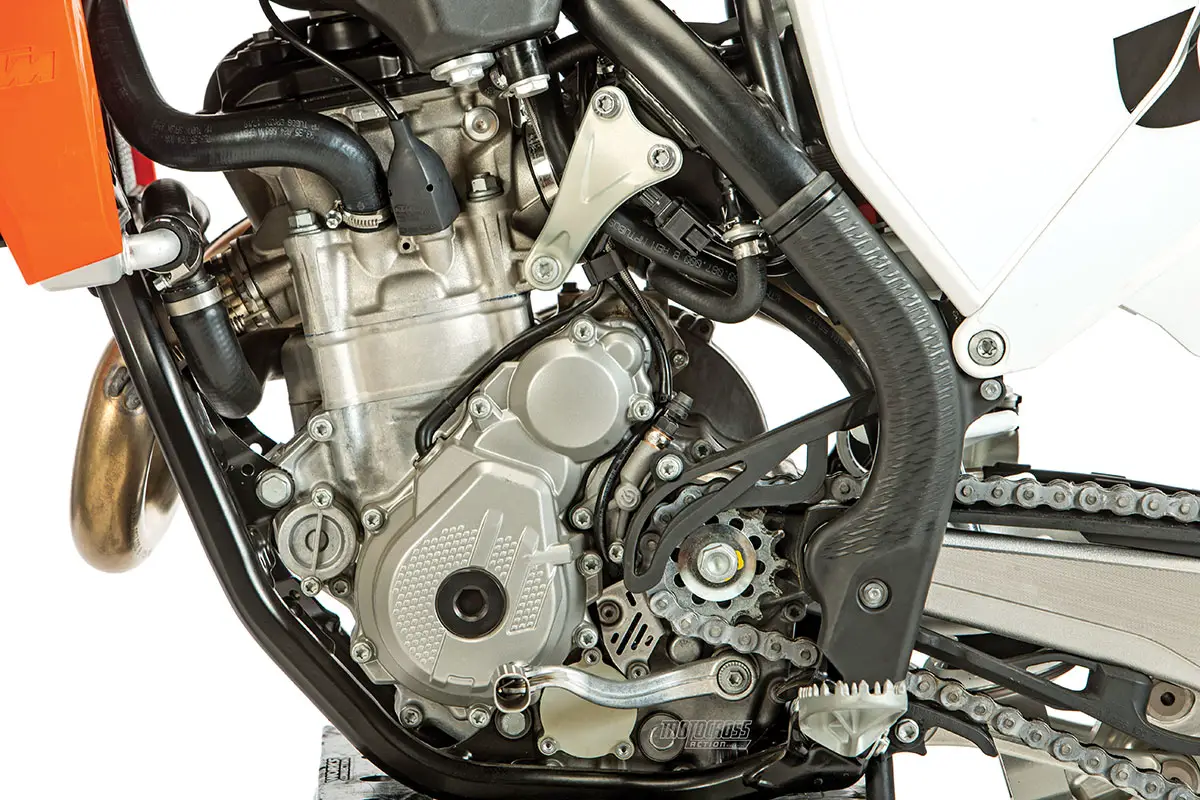
(3) Maps. When we sent test riders out to test the multi-switch map settings, they would come back and say, “Now, do you want me to try the stock #1 map?” We’d look at them like they were crazy and reply, “That was the #1 map. You haven’t ridden with the #2 map yet.” That is how much better the stock #1 map on the 2019 KTM 350SXF is compared to the 2018 maps. According to KTM, the difference between map #1 and map #2 has been made more distinct and slightly wider apart. We don’t feel that KTM has separated the maps enough.
(4) Velocity stack. Most modern engines have velocity stacks, which are bell-shaped trumpets that guide air into the intake side of the throttle body. In the case of the 2019 KTM 350SXF, last year’s velocity stack was reshaped to have less flare in the bell’s flute, less of an acute angle into the throttle body and a shorter overall length. This straighter and more focused trumpet increases fuel velocity, which lessens lag and improves pick up at lower rpm.
(5) Dyno runs. Seeking to understand why we felt a vastly improved 350SXF powerband but were down in peak power and torque, we took our dyno runs to Pro Circuit’s Mitch Payton and told him what we felt and what confused us. He looked at the dyno chart for about 15 seconds and said, “You’re too focused on the numbers. You need to look at the curve.” So, Mitch overlaid the 2019 KTM 350SXF dyno run on the 2018 dyno chart. Guess what? At 8000 rpm, the 2019 powerband showed a bulge that lasted almost to 11,500 rpm. That bulge showed that the 2019 350SXF made 50.82 horsepower at 10,000 rpm, while the 2018 KTM only made 48.76 horsepower. Due to the high-rpm nature of the KTM 350SXF, the bulge corresponded with what would be a massive increase in midrange power for the 2019. Thus, the dyno and the seat of our pants agreed.
Q: WHAT WAS THE BIG SURPRISE?
A: Remember where we said, “This results in a quicker response the instant you twist your wrist, but that super response lays down a little between tip-in and 8000 rpm, and that was surprising. We liked the engine’s power, but wanted it to go quicker in the low-to-mid transition.” It turns out that the all-new airbox design is a little choked off—noted by the muted low-to-mid transition. When we removed the airbox cover, on the track and on the dyno, we got snappier response across the gap from the low to the mid. Unfortunately, we can’t ride with the airbox cover off, so we took out our trusty Makita drill, equipped with a 1-1/4-inch spade hole bit on it, and drilled holes in the cover until we got the added horsepower back. See the photo below for a diagram of where to drill the holes. We cover the holes with duct tape when we wash the bike. We gain both throttle response and horsepower with our Makita mod.
Q: WHY IS THE NEW FUEL PUMP A BIG DEAL?
A: One of the recurring issues with the previous KTM fuel pump was that the internal fuel lines in the gas tank were prone to kinking. When the lines kinked, the engine would be starved for fuel. This caused it to run ratty—if it would run at all. Worst of all, the fuel pump would burn up if fuel stopped running through it. KTM tried rerouting and reinforcing the fuel lines, but the problem always resurfaced. KTM solved this on the 2019 by moving the fuel pump and the fuel pick-up points to opposite sides of the gas tank. Now the KTM fuel lines run in a straight line from the right side of the gas tank to the left.
Q: WHAT IS PANKL?
A: Pankl Racing Systems is an Austrian-based, high-performance drivetrain company that produces parts for Formula 1 teams. They also make some high-tech products for Husqvarna and KTM racing motorcycles. For 2019, KTM will be using a complete Pankl gearbox in its four-stroke models. Did we mention that KTM owner Stefan Pierer just happens to own both KTM and Pankl—think of it as a marriage made in the boardroom. The KTM 350F’s Pankl transmission features the exact same gear combinations and ratio as the 2018 gearbox, but the metallurgy is reportedly a step above what was being used previously.
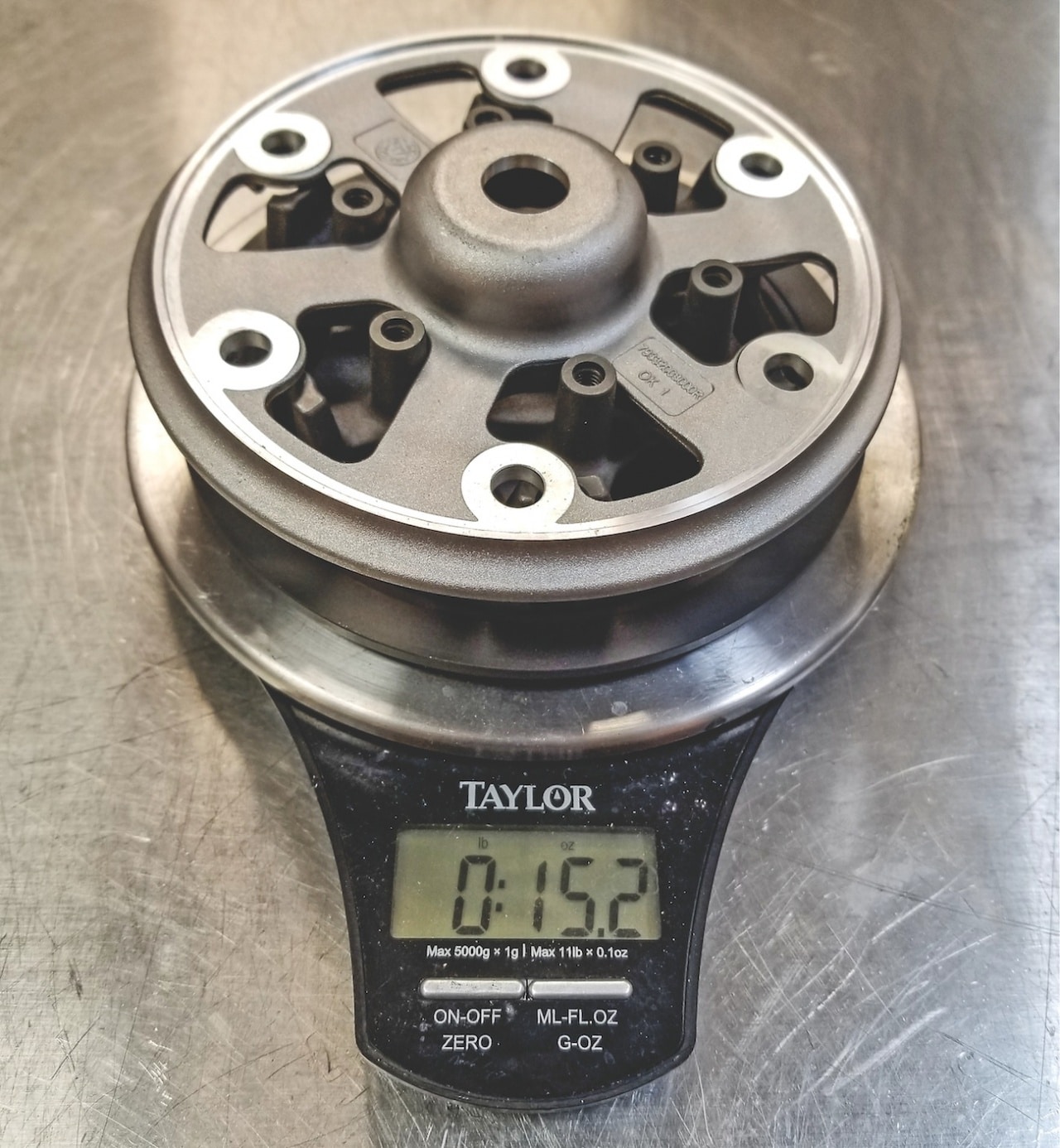
Q: DON’T KTMS ALREADY COME WITH DIAPHRAGM CLUTCHES?
A: Yes and no. In 2019, the KTM 450SXF and the KTM 250SX two-stroke come with Belleville washer-operated DDS (Damped Diaphragm System) clutches. For 2019, they are still the only KTMs to come with DDS clutches. The KTM 250SXF and 350SXF did not have DDS clutches in 2018—and they still don’t. For 2019, however, those models will drop their coil spring-operated clutch systems for the same Belleville washer design as used on the 450SXF and 250SX. The kicker is that they will not get the exact same clutch. The 250SXF and 350SXF will not get the rubber-damped cush hubs that are in the big-bike clutches. Why not? They don’t need to cushion the jolt of each gear because of their lower power profile. Thus, the 250SXF and 350SXF clutches will not be damped by rubber inserts but will get the Belleville washer. Thy are called DS clutches (for Diaphragm System). The Belleville washer is essentially a large cupped washer that provides spring pressure as it is compressed. The 450SXF’s Belleville washer is rated at 295 N/m of “slip torque,” while the 250SXF and 350SXF washers are at 270 N/m.
Q: HOW GOOD ARE THE 2019 KTM 350SXF FORKS?
A: The WP AER forks are the best air forks ever made. There is a setting that will work for anyone who is willing to take the time to find his personal numbers. 2019 KTM 350SXF owners will find a new two-stage base valve, a spacer in the rebound (balance) side of the air chamber that reduces air volume by 50 percent, softened compression valving, two-stage rebound damping and lower recommended air pressure settings (150-psi standard) on the 2019 WP AER air forks. The Neken triple clamps are 5mm wider (from front to rear), which makes them 5 percent stiffer. In action, the new forks are much better, but they do require a little extra test time because of the internal design changes. We found that we could get them in the ballpark by modifying our 2018 air pressures and compression settings by going softer than what we ran last year.
But, Vet riders seemed to prefer last year’s forks, without all the changes, because they were suppler and more resilient through their stroke. We tend to believe that this difference in feel are related to the stiffer triple clamps and more rigid frame. They can be worked out with lots of of test time.
If we know one thing, it is to set the air pressure first (using the zip-tie method to check for full travel), then go in and out with the compression and rebound clickers (starting at the stock 15 clicks out). This can be done in a series of single-lap tests. Don’t be afraid to experiment. There are MXA test riders who run air pressures in the 130 range, some at the stock 150 psi and some who exceed 156 psi. As a rule of thumb, once the air pressure is in the ballpark, we do all the fine-tuning with the compression clicker.
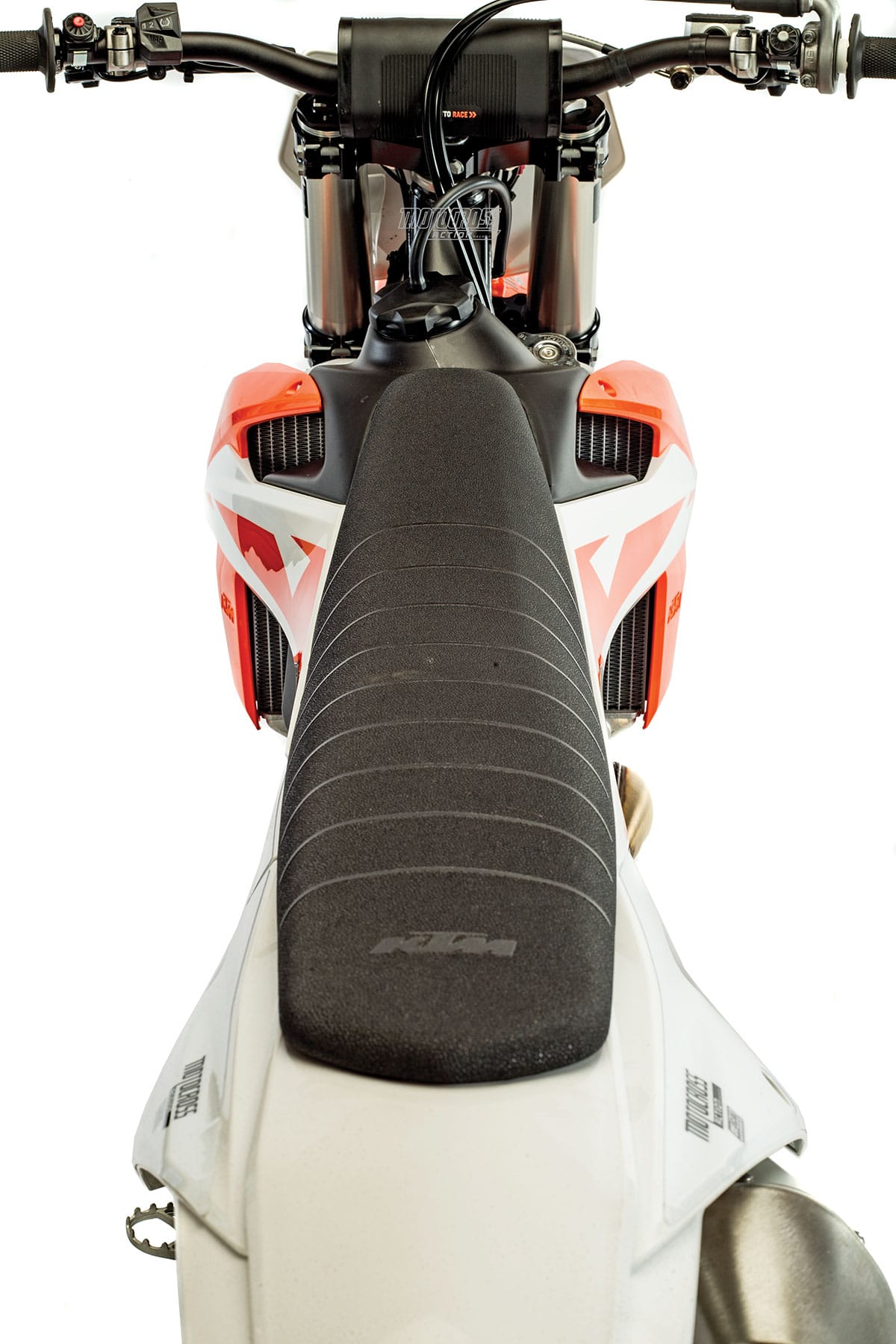
Q: WHAT DID WE HAVE ISSUES WITH?
A: The 2019 KTM 350SXF is more refined, and while it doesn’t look a lot different from its 2018 brethren, it works better in almost every area. But, and there is always a but, we do have issues that bother us.
First, for some reason, with the same 105mm of sag we ran last year, the 2019 felt taller. Short riders, who could just get a toe on the ground in 2018, could not get close in 2019. The new seat has a different profile, and, in an attempt to cushion the rider’s butt from hitting the frame rails when seat bouncing, they made the seat foam firmer and taller in the rear.
Second, our clutch-side lock-on ODI grip wiggled. We checked the Torx bolt in the clamp and it was tight, so the wiggle was in the plastic sleeve.
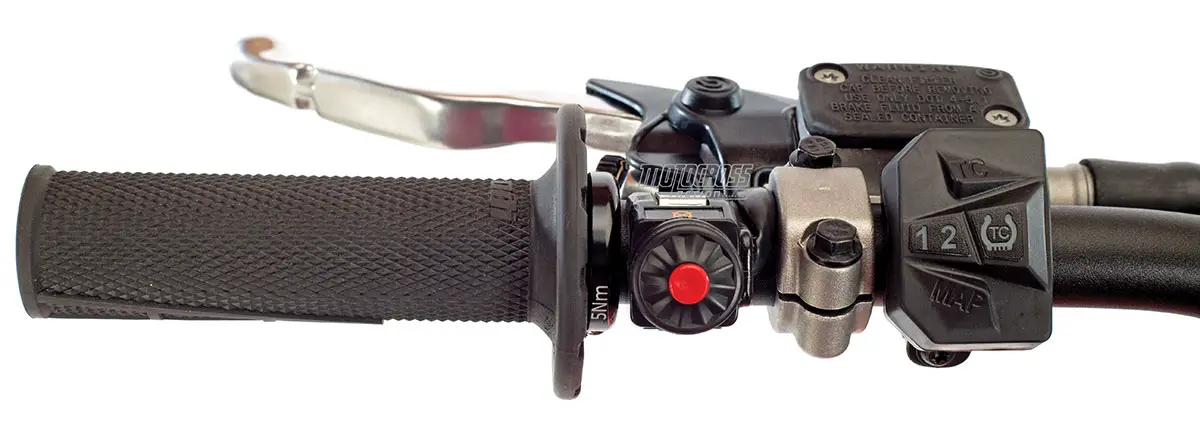
Third, we are confused as to why KTMs come from the factory with the multi-switch map button next to the grip and the kill button mounted inboard on the other side of the clutch perch. Why does this bother us? When your engine is stuck wide open, your first concern will not be changing from the stock to aggressive map. We swicthed ours.
Fourth, for 2019 KTM replaced the two short seat bolts with one long bolt that threads in from the left side. It goes through a steel tube in the seat base to thread into a riv-nut on the right side of the frame. We were never fans of the two short bolts because they were hidden in a little cranny that made it difficult to reach them. Thus we prefer the one long bolt, but it is weird.
Fifth, we should note that KTM was very proud of its new 2019 spoke nipples, which they insisted would put a stop to our endless complaints about the spoke next to the rear rim lock coming loose. Believe it or not, it came loose in the first hour (while we were hanging out with KTM R&D guys). They weren’t happy.
Q: WHAT DID WE HATE?
A: The hate list:
(1) Sprocket/spokes. Watch the sprocket bolts and spokes closely. They loosen up constantly.
(2) Lock-on grips. Although we like the feel and ease of use of the ODI lock-on grips, we have one quibble. Since the clutch-side grip is mounted on a sleeve that slips over the bars, the actual rubber thickness of the grip is reduced by the thickness of the plastic sleeve. If you have hand issues, switch to regular glue-on grips. Their rubber is twice as thick. The Neken SFH bars and grips are four times thicker.
(3) Wire screen. There is a wire screen inside the mufflers perf core. It is not a USFS-legal spark arrestor and it will burn out eventually. It is hard to remove, so we punctured it with a screwdriver to lessen the restriction.
(4) Front brake hose. Be very careful when hooking tie-downs onto your handlebars that they don’t crimp the L-bend tube coming out of the front brake’s master cylinder.
(5) Black. You don’t need a Gallup Poll to tell you that every KTM owner prefers the orange frame, so what marketing man thinks it is a good idea to paint it black?
Q: WHAT DID WE LIKE?
A: The like list:
(1) Weight. We understand that riders who own Hondas, Suzukis and Yamahas are going to say that weight doesn’t matter in a motocross bike. They bought a tub of lard and need to justify it by ignoring the basic laws of physics. Weight does matter. If not to you, then think about your rims, spokes, fork springs, frame and suspension when landing from jumps—not to mention under acceleration or braking. And, if the manufacturers of the 238-pound CRF, 238-pound YZ-F, 233-pound KX and 241-pound RM-Z could find the budget to get down to 221 pounds, the engineers would jump at it.
(2) Brakes/Starter. Motocross is all about starting and stopping. The KTM has had electric starting for 20 years, and KTM obviously knows how to build an electric-start bike that doesn’t weigh as much as an oil tanker. Plus, a lighter bike doesn’t stress the brakes as much as a heavy one. Since KTMs have Brembo brakes and are the lightest bikes, they have incredible stopping power.
(3) Air filter. Great air filter. Great airbox. Great overall design. No mess. No fuss. No mistakes. We are talking about the air filter, cage and plug-in design—not the airbox itself.
(4) Hydraulic clutch. KTM has the strongest, longest-lasting and most predictable clutch on the track. It has a CNC-machined steel basket, with the primary gear machined into it and is activated by a Belleville washer, which provides consistent pressure across the pressure plate (unlike six coil springs). This is the only clutch that can stand up to a clutch abuser without whimpering.
(5) Shifting. The Pankl gear set is an amazing addition to a bike that is already the best shifting bike on the track. KTM switched to Pankl because its steel was purer than last year’s sulfur-weakened steel. We liked the switch because the 350SXF shifted better.
(6) Skid plate. A skid plate is always a plus, and while the 350SXF doesn’t come with one, it does come with the mounting tabs already welded under the frame to hold one—although only the one from your KTM dealer.
(7) Radiators. Not only did KTM lower the radiators on the 350SXF, but the engineers increased the water-supply-line diameter by 4mm. And as you probably already know, KTM’s “modified delta distributor” flows more water than the old fixture. What is a modified delta distributor? It is the T-fitting that redirects water inside the frame’s head tube.
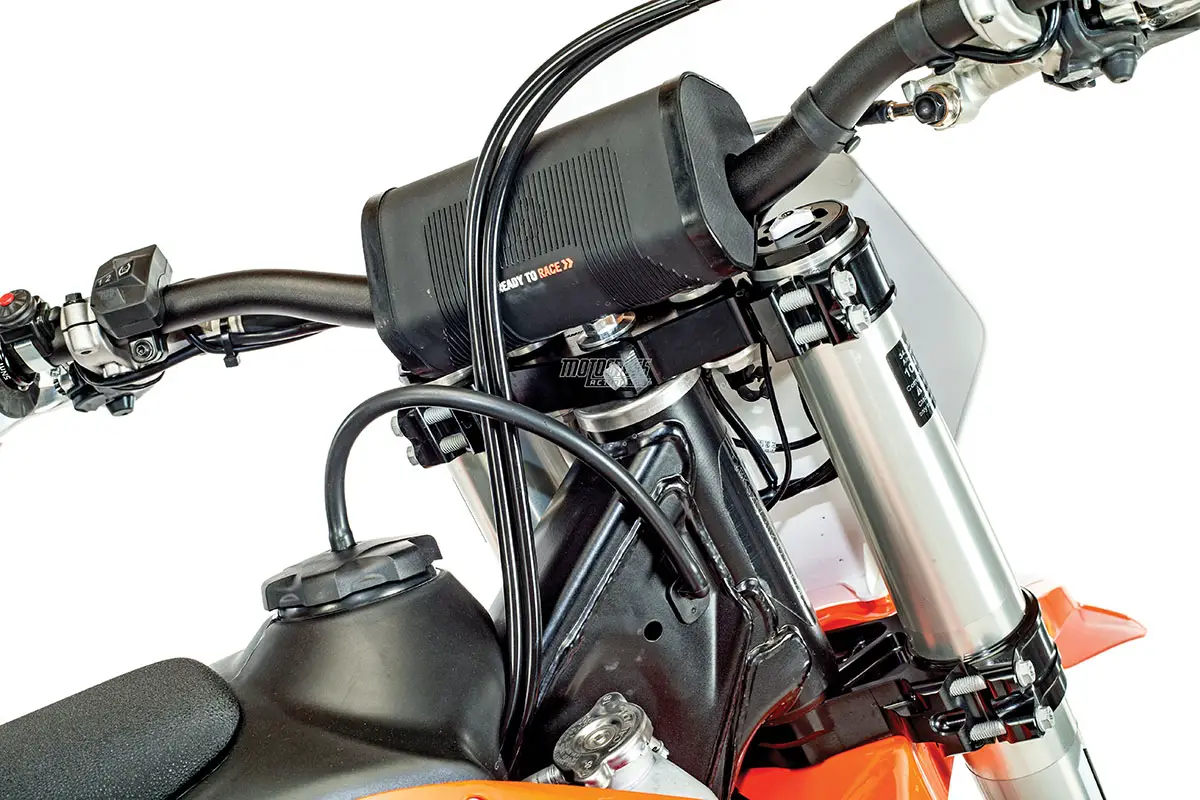
Q: WHAT DO WE REALLY THINK?
A: In truth, we think KTM should have been more creative on the plastic of the 2019 KTM 350SXF. To the trained eye, it is different, but it’s not different enough (and since the 2019 plastic was all new, there wouldn’t have been any added cost to go wilder). We also have issues with the amount of air that the new airbox is capable of drawing in. We drilled holes in the airbox cover to get back anywhere from 1 to 1-1/2 horsepower.
Howeve, under the plastic bodywork and airbox design, this is a better KTM 350SXF. No other production bike in motocross history has been so noticeably improved from year to year. This bike is not your grandfather’s 350SXF. It has only been around for eight model years, so it’s not even your older brother’s 350SXF. The technological leaps that the 350SXF has made since it was introduced in 2011 (when it wasn’t a very good bike) are dazzling. And that is what you’ll be in the saddle of a 2019 KTM 350SXF—dazzling.
MXA’S 2019 KTM 350SXF SETUP SPECS
This is how we set up our 2019 KTM 350SXF for racing. We offer it as a guide to help you find your own sweet spot.
AER FORK SETTINGS
The majority of MXA test riders ignore the recommended air pressure numbers. They are not well-suited to the majority of KTM owners. We have had test riders of similar speeds vary their air pressure by as much as 15 pounds and both be happy with the way the forks perform. This is achieved with clicker settings. Most Vet riders tend to run lower pressures than fast riders, often as low as 130 psi. There is no harm in a low air pressure setting, as long as the front of the bike doesn’t hang down in the corners and use up travel too quickly. For hardcore racing, we recommend this fork setup as a starting point for an average rider on the 2019 KTM 350SXF (stock specs are in parentheses):
Spring rate: 138 psi (150 psi)
Compression: 25 clicks out (15 clicks out)
Rebound: 15 clicks out
Fork-leg height: Third line
Notes: If we feel that the forks are harsh in the middle, but tend to ride high when we increase the air pressure, we lower the oil height in the damping leg by 10 to 20mm to eliminate a harsh spot in the travel. Additionally, pay attention to extreme temperature changes. You may have to change the AER’s air pressure as it gets hotter later in the day. We bleed the outer chambers constantly.
WP SHOCK SETTINGS
If you are heavier than 180 pounds, you might want to run the 2016 KTM 350SXF’s 48 N/m spring or the 2018 45 N/m spring. For 2019 both the 250SXF and 350SXF come with 42 N/m springs. Overall, this is a very good shock and the lighter spring rate makes it work better for lightweight to middleweight contenders. We do make clicker adjustments, although we rarely stray very far from the stock 15 clicks out on compression. Most MXA test riders leave the low-speed compression setting alone and focus on the high-speed dial to make the changes. We do run additional rebound damping. For hardcore racing, we recommend this shock setup as a starting point for the 2019 KTM 350SXF (stock specs are in parentheses):
Spring rate: 42 N/m
Race sag: 105mm (110mm)
Hi-compression: 1-3/4 turns out (2 turns out)
Lo-compression: 15 clicks out
Rebound: 10 clicks out (15 clicks out)
Notes: We turned the high-speed compression damping in a 1/4 turn to lessen G-outs and run more rebound than the recommended setting. Additionally, we set the sag at 105mm instead of the WP-recommended 110mm.


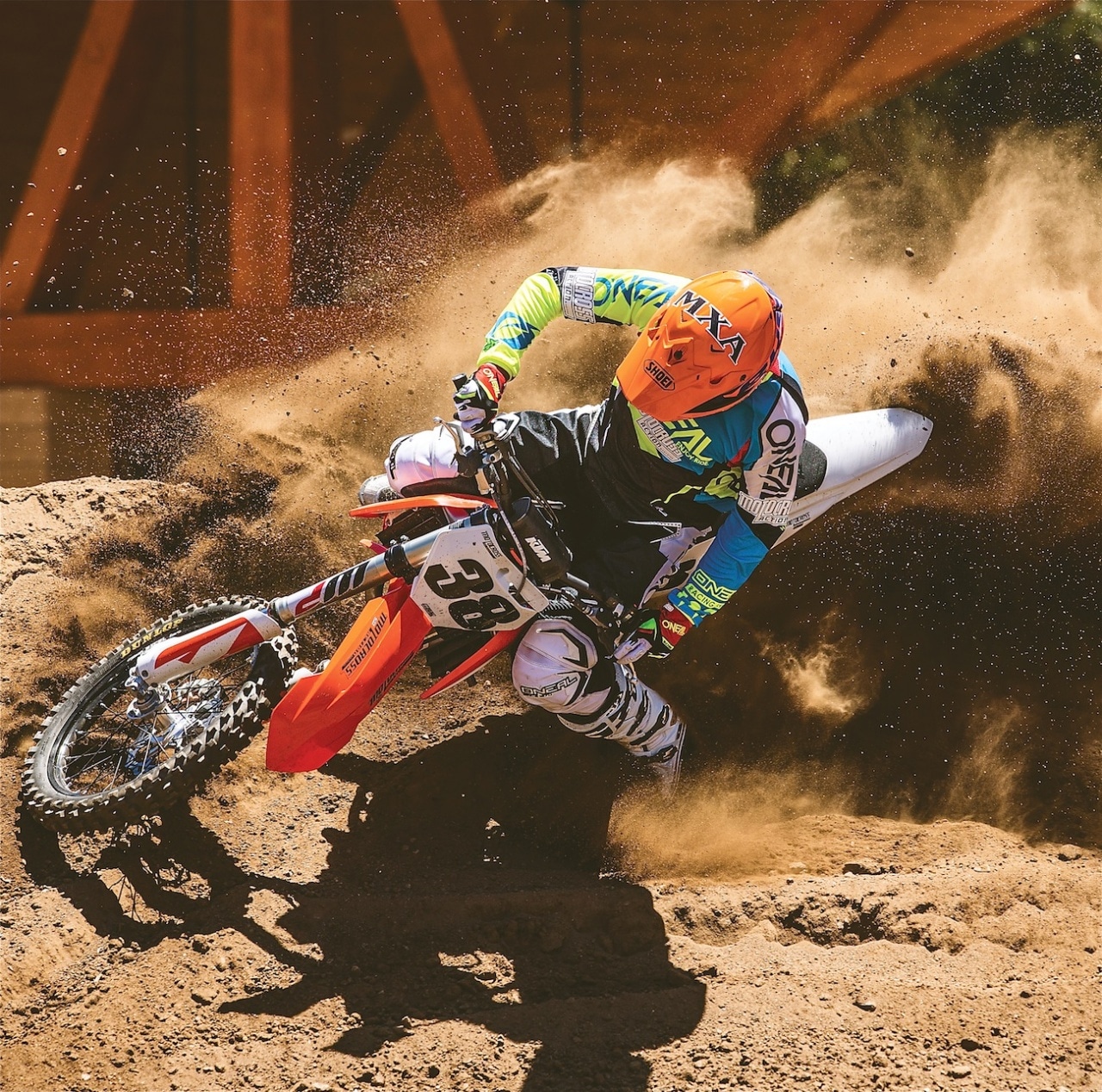
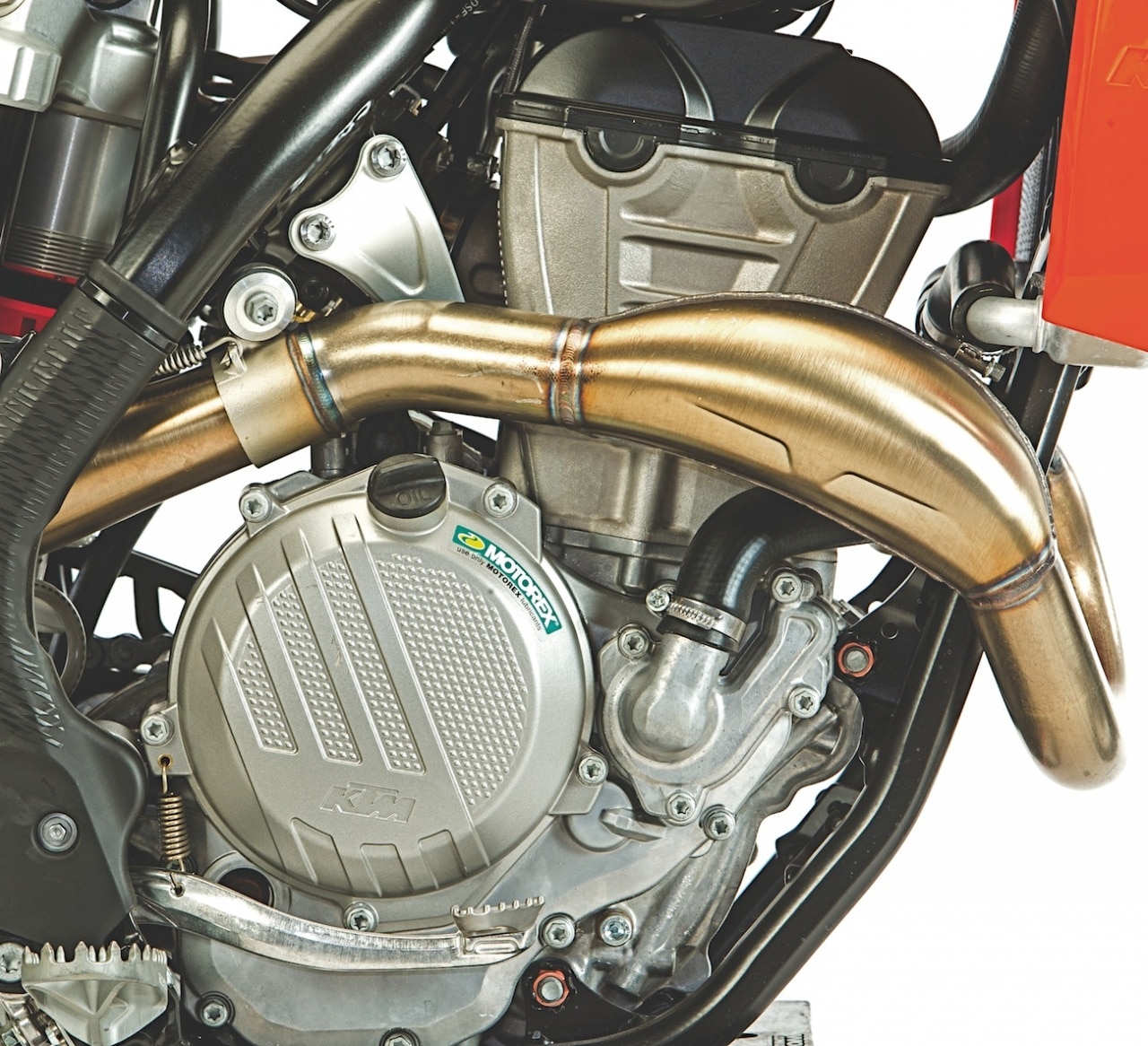
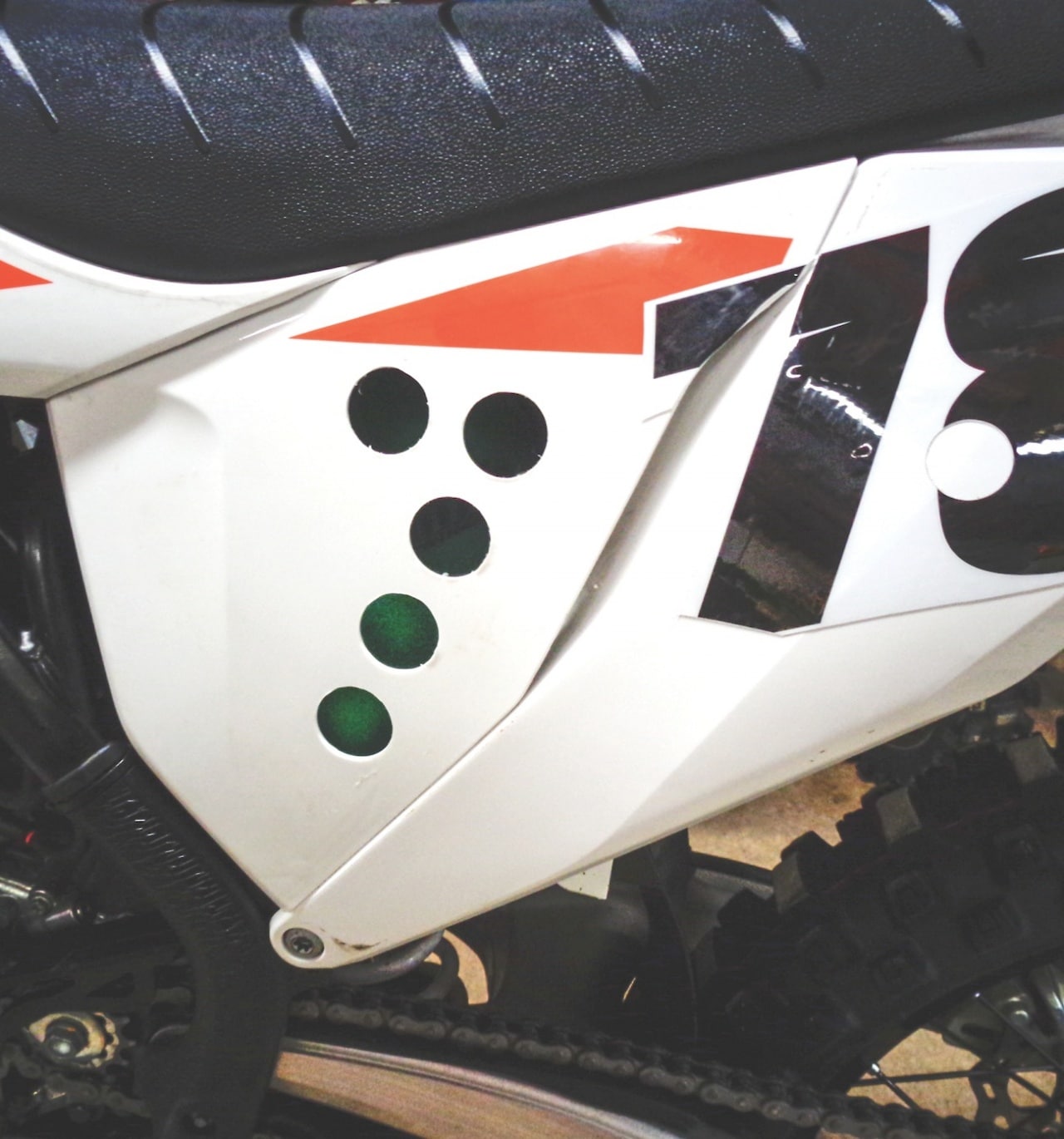
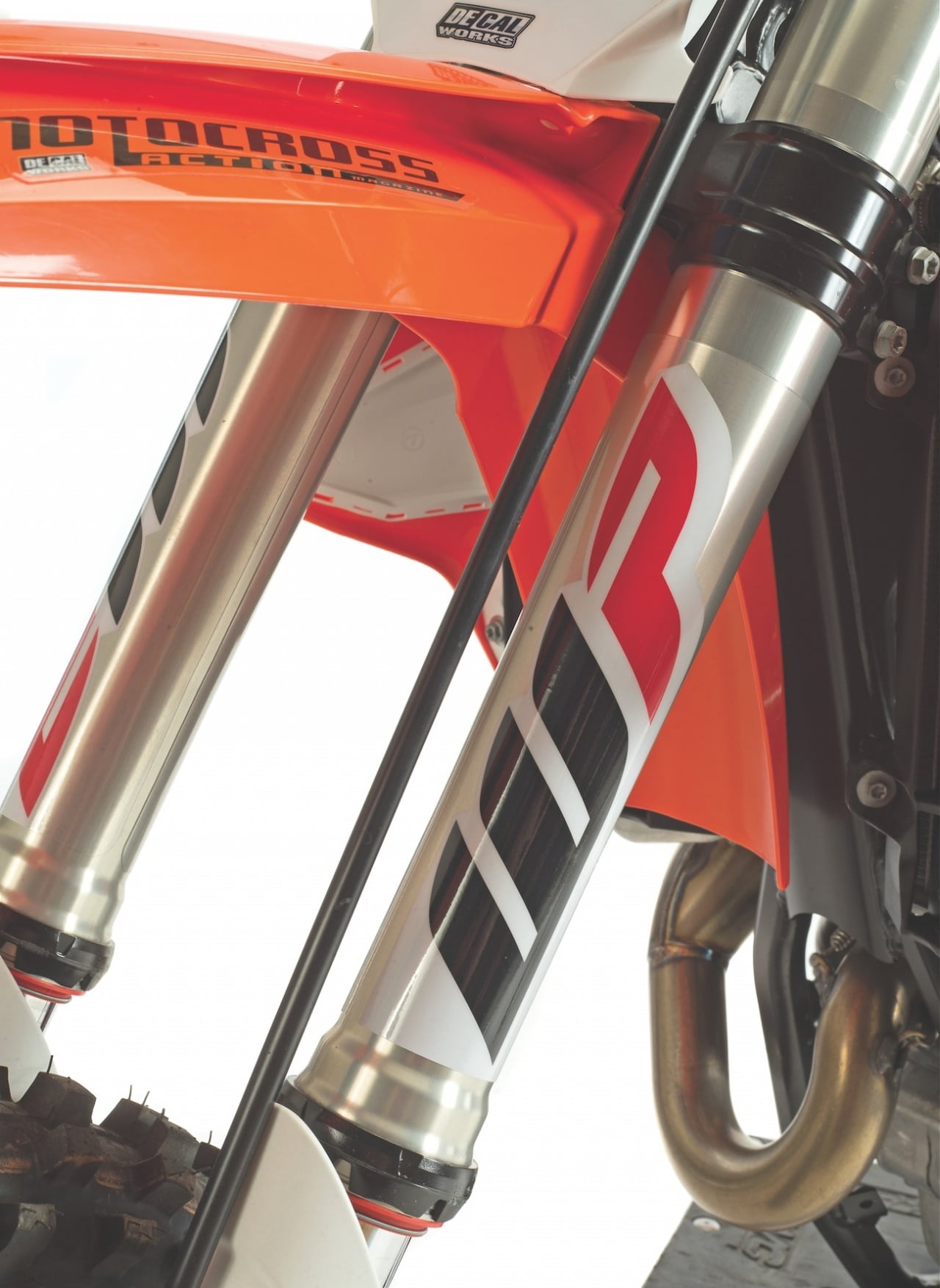


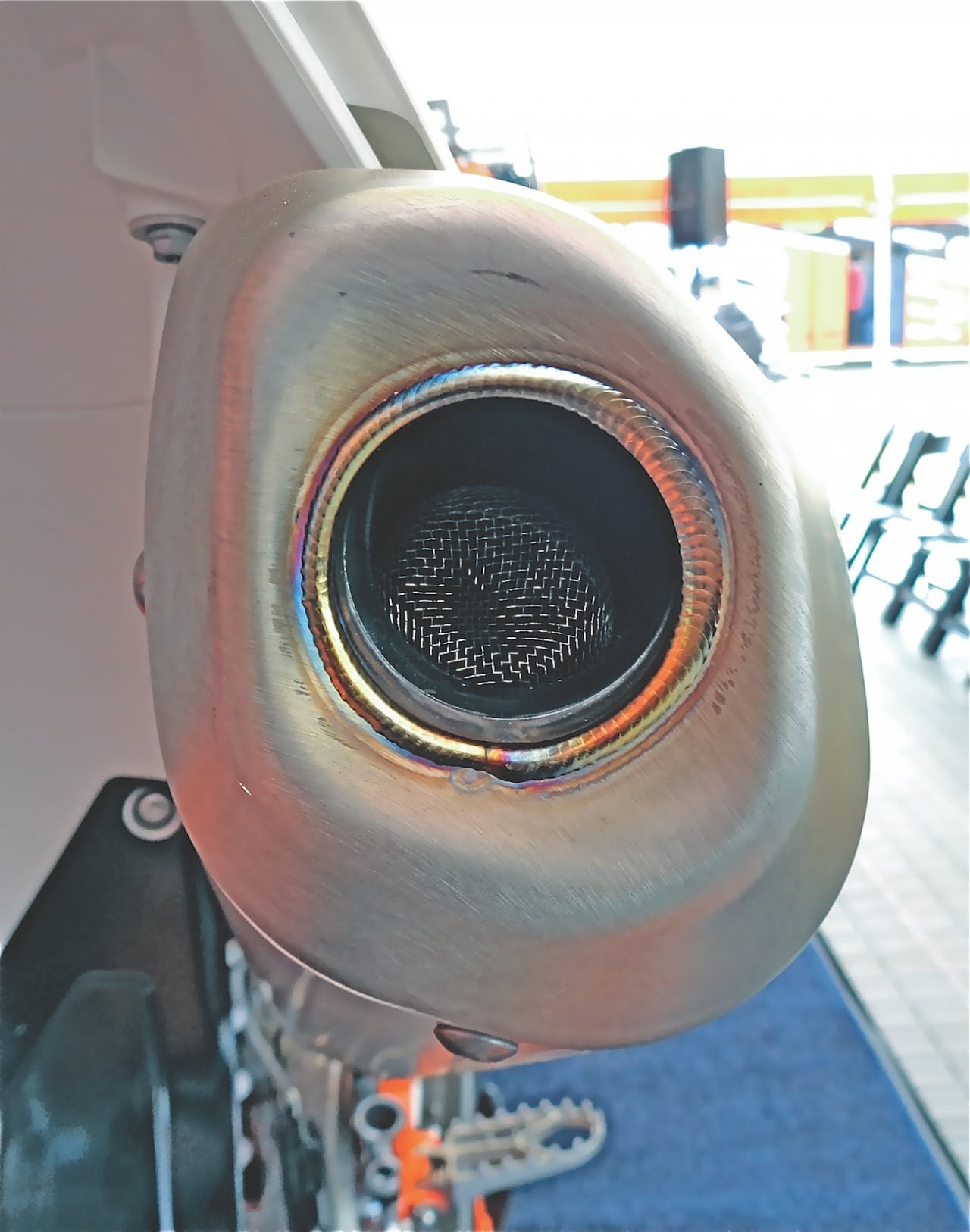
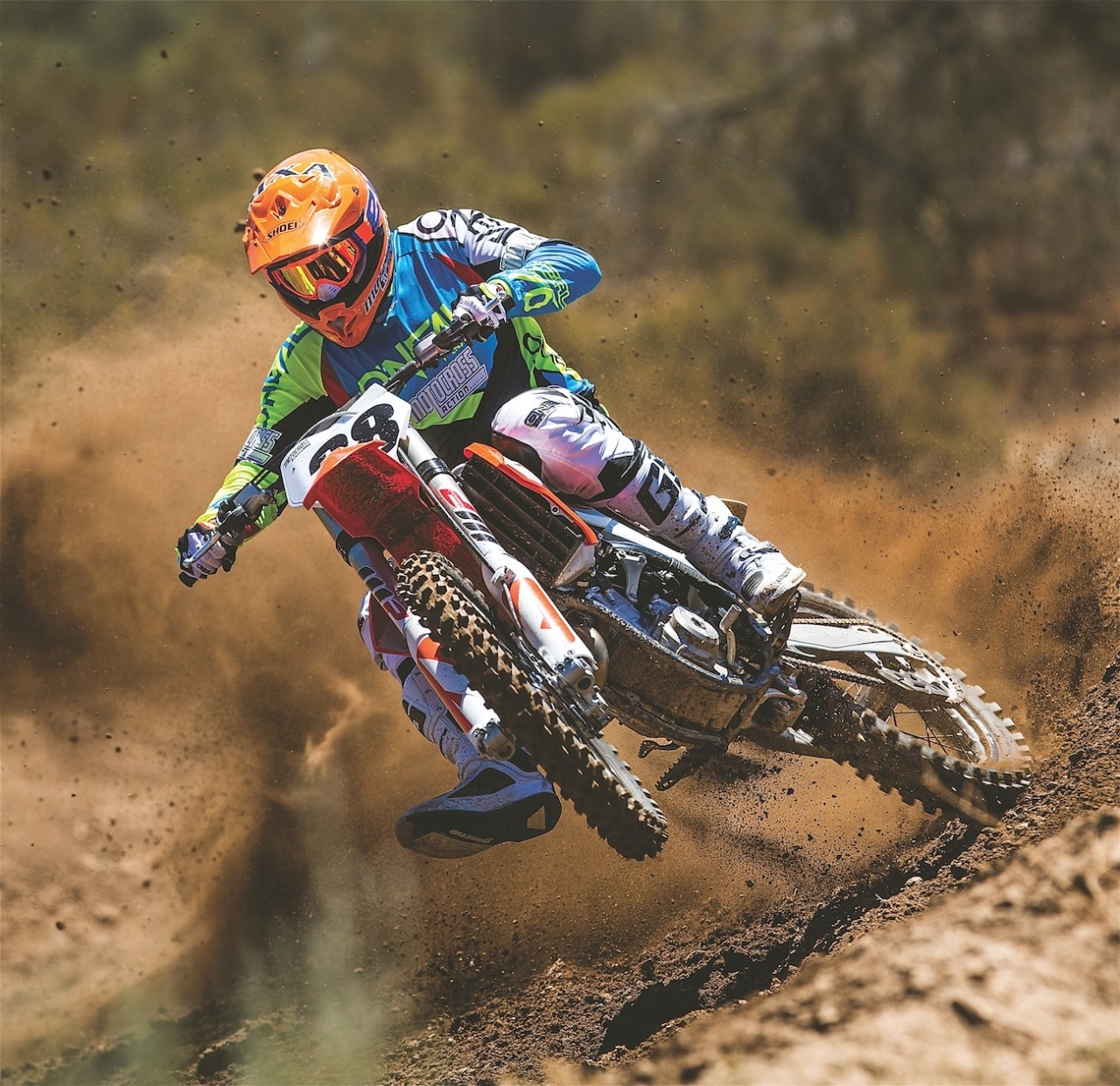
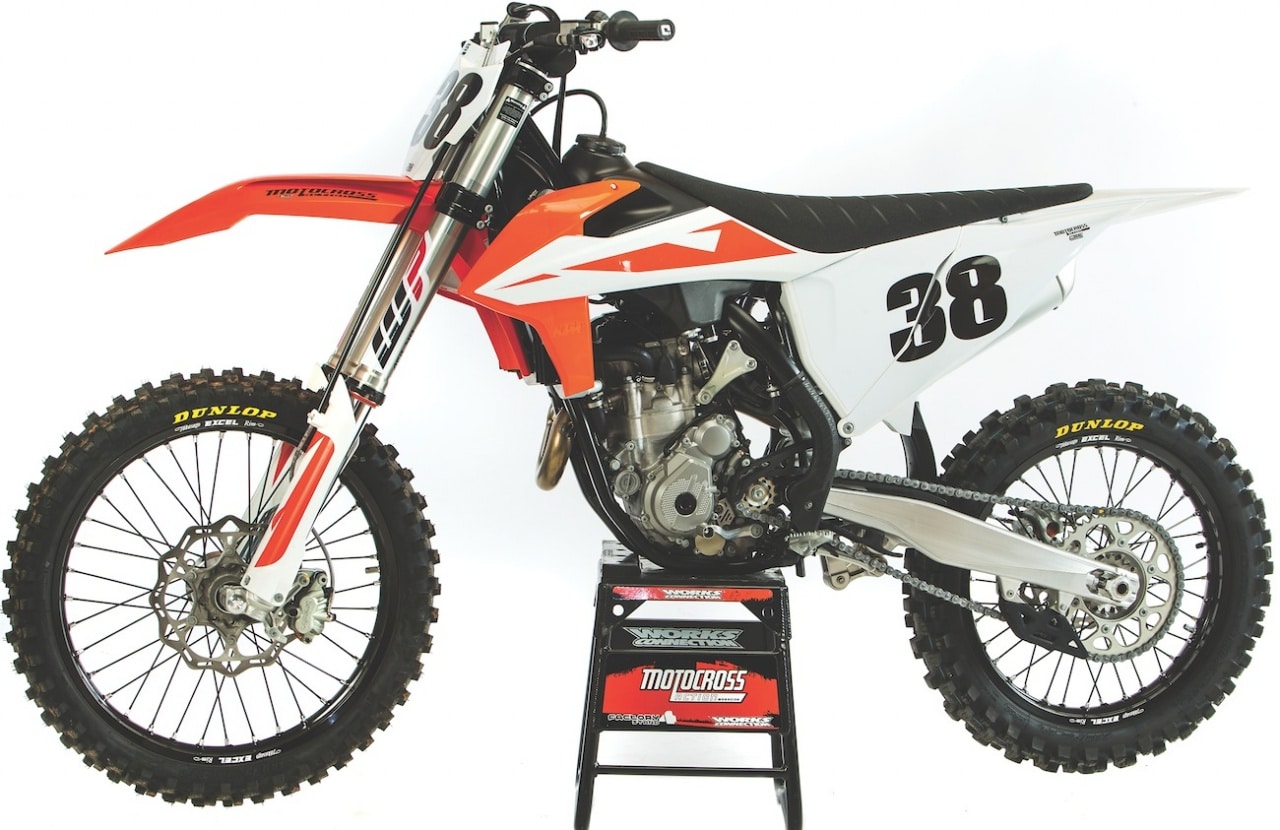
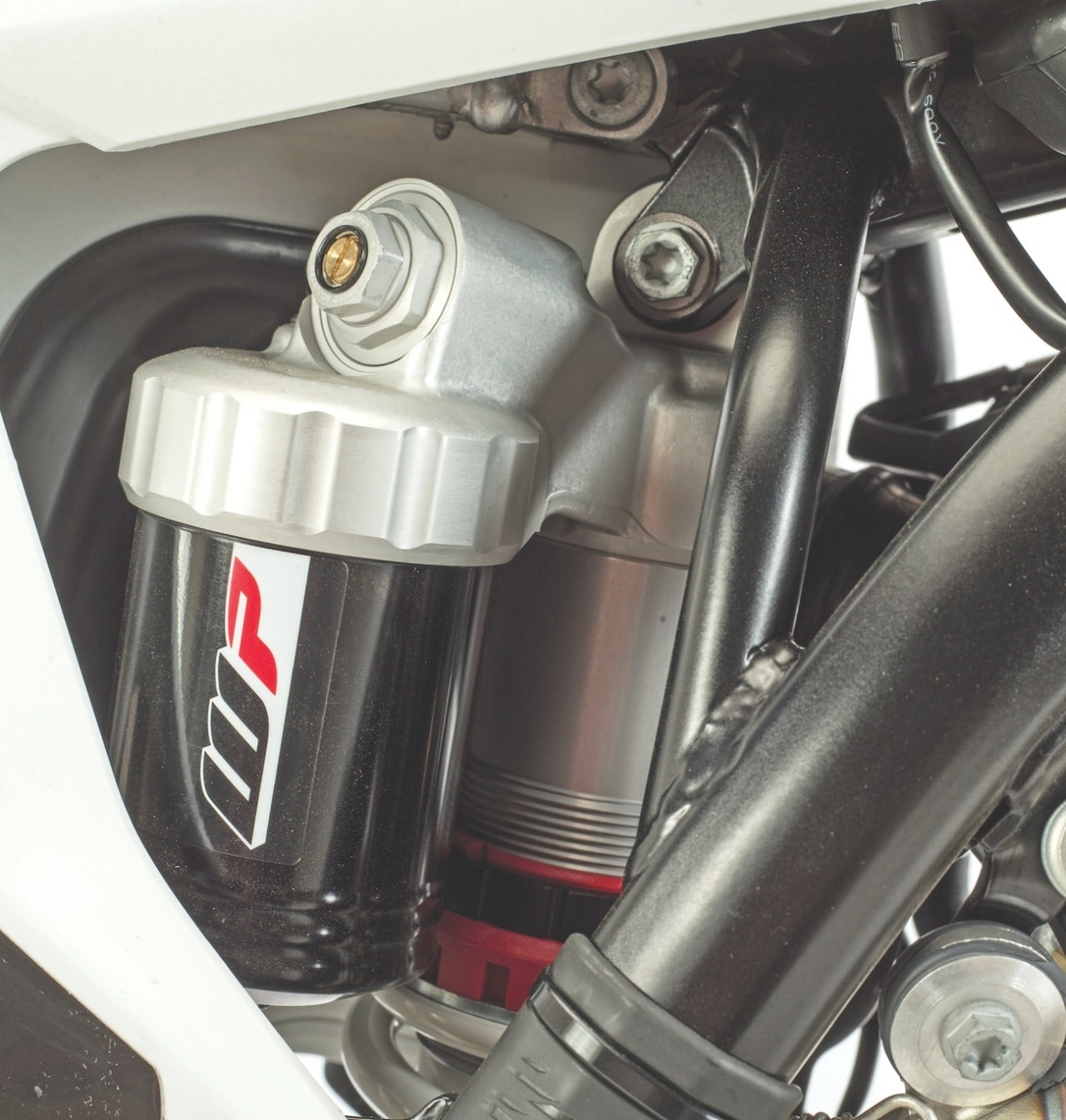



Comments are closed.